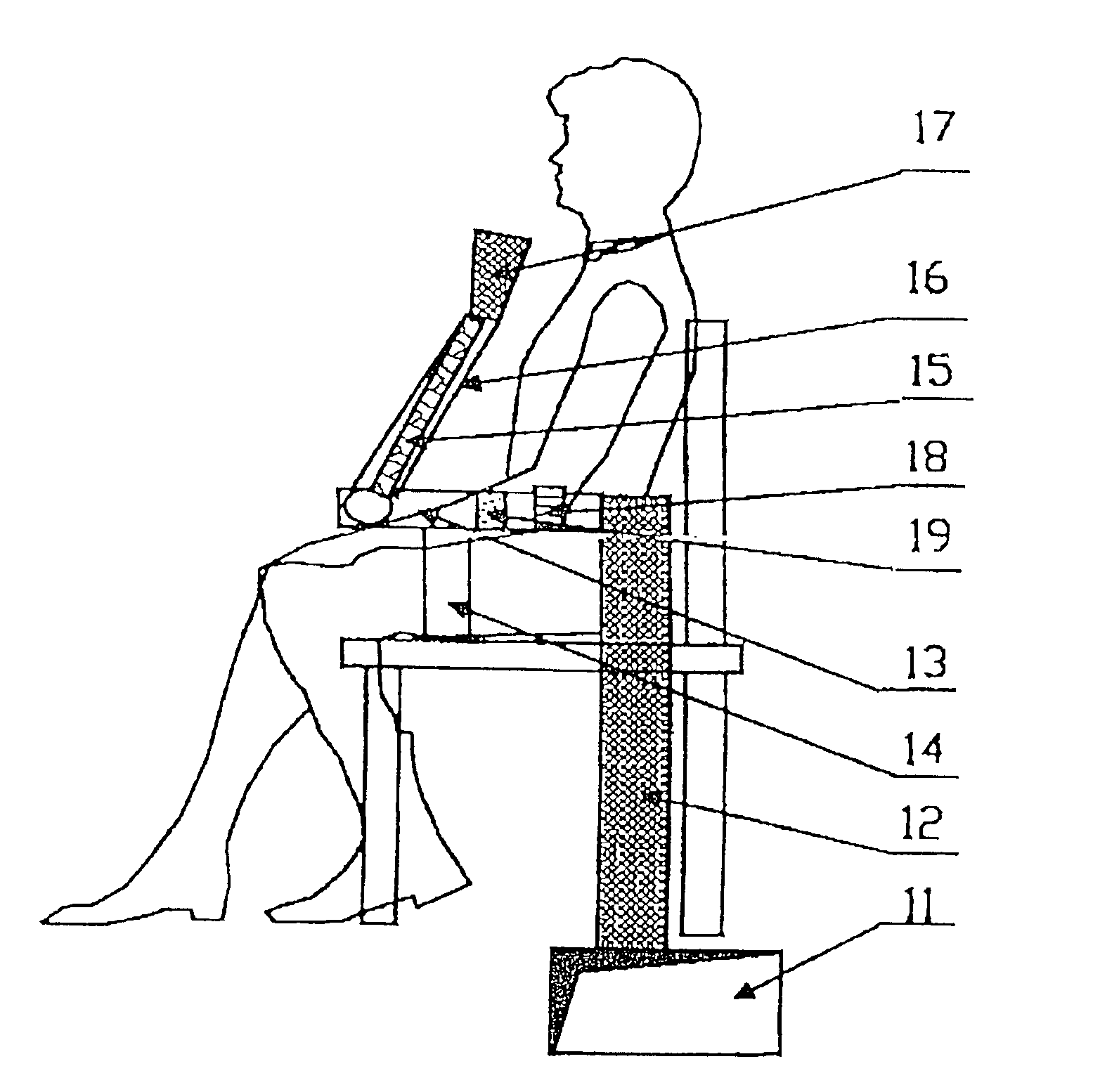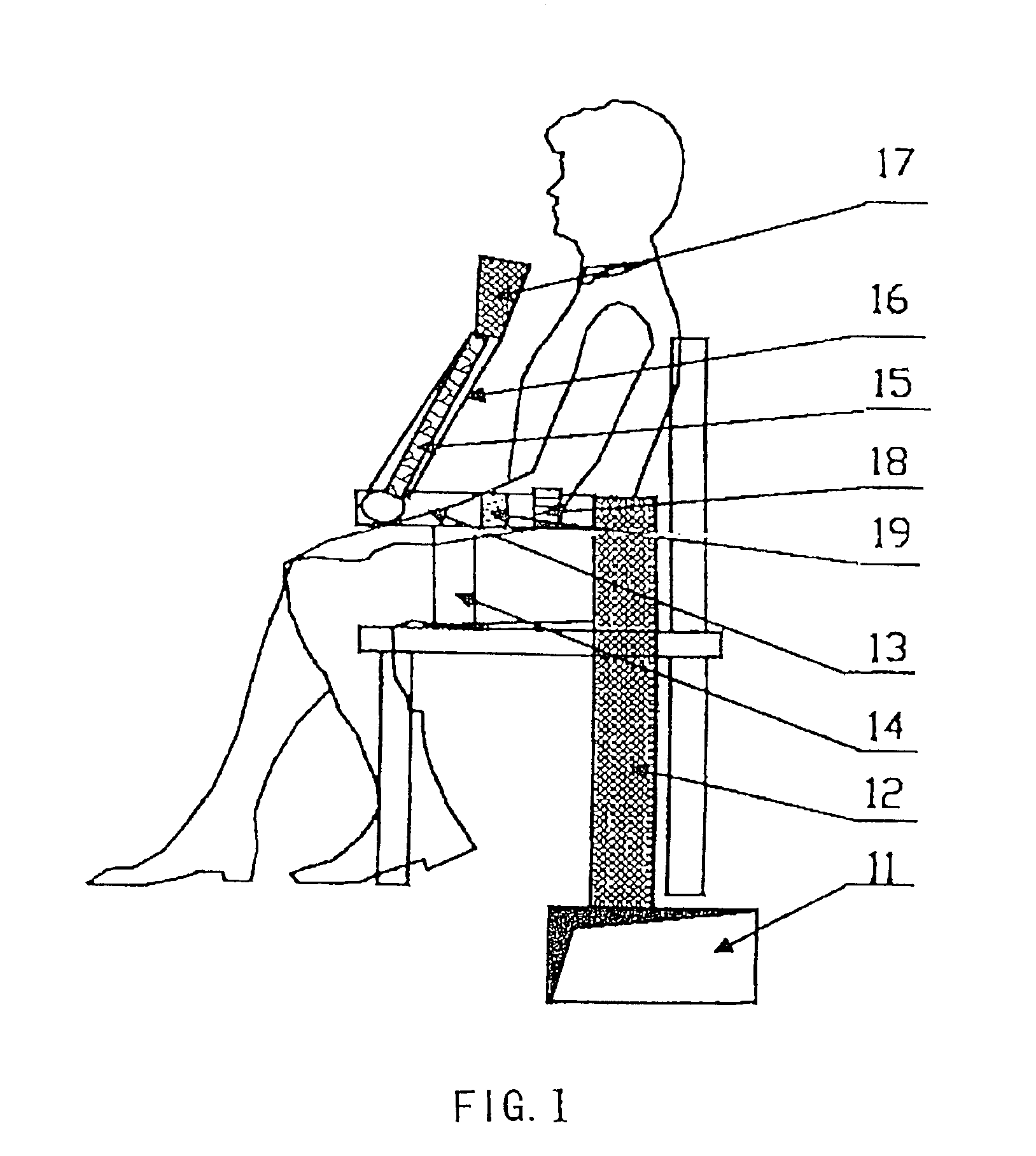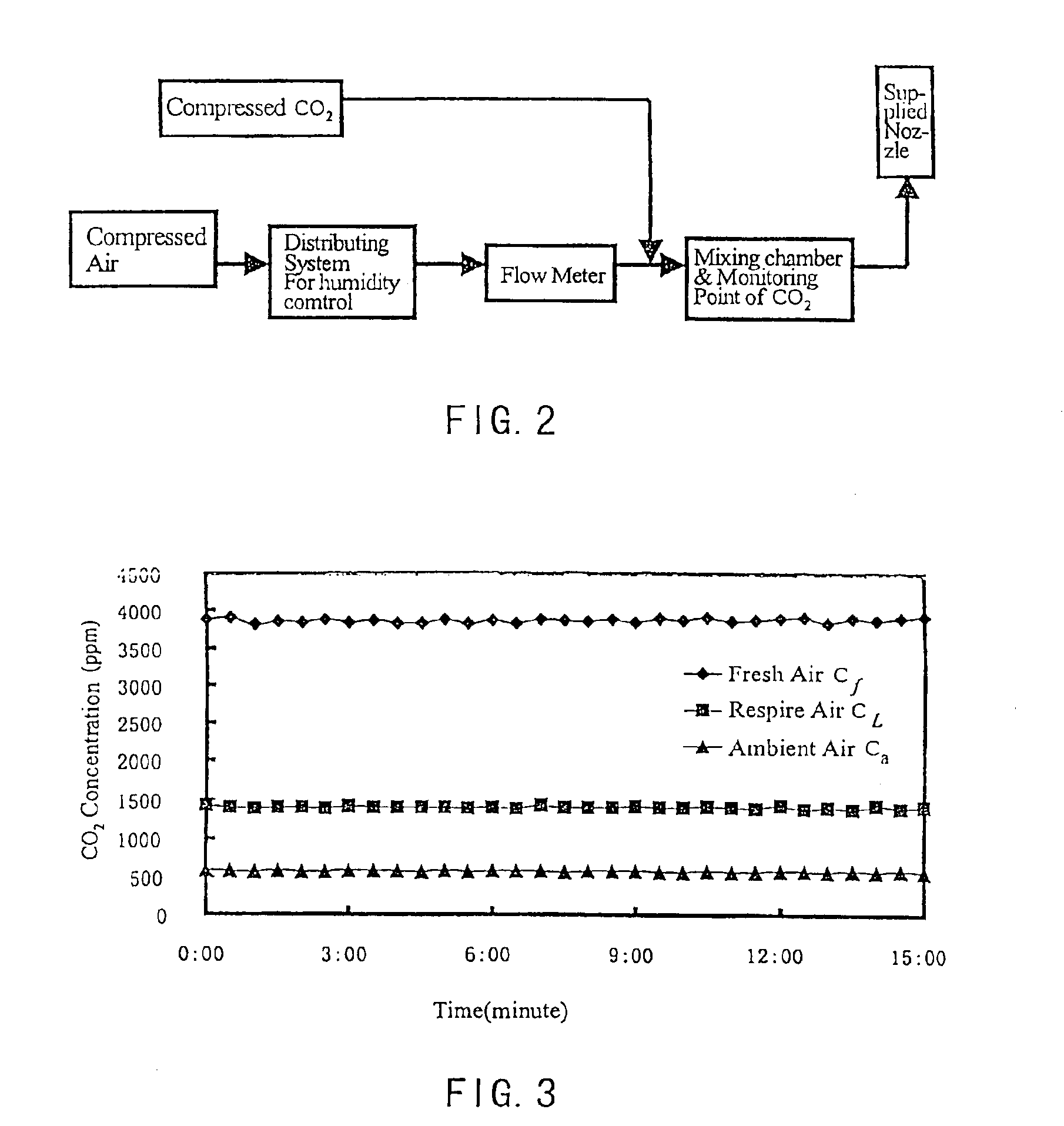Indoor ventilation system with personalized ventilation device and its method of usage
a ventilation system and ventilation device technology, applied in ventilation systems, lighting and heating apparatus, heating types, etc., can solve the problems of inefficiency of ventilation systems, system disclosure, and worse air quality inhaled by people in rooms, so as to reduce the fresh air supply rate and reduce the chance of infection
- Summary
- Abstract
- Description
- Claims
- Application Information
AI Technical Summary
Benefits of technology
Problems solved by technology
Method used
Image
Examples
Embodiment Construction
[0030]A preferred embodiment of a ventilation system including personal air supply devices will be described with reference to FIGS. 1-9B. Referring now to FIG. 1, the main conduit 11 for supplying air may run beneath the floor and parallel to the direction of the seats, although the position of the main conduit 11 is not so limited. A supply duct 12 extends upwardly from the main conduit 11 and is shown as an independent element from the chair rear legs. Alternatively, the supply duct 12 may be integrated with one or more of the front or rear chair legs. The supply duct 12 may also be integrated with the armrest support 14. Since the ventilation device of the present invention is operated at low pressures and small volumes, the inside diameter of the supply duct 12 is approximately 2 inches or less. The materials for the supply duct should be inert, odor free and non-flammable. Such materials include, but are not limited to aluminum, fireproof polythene, etc.
[0031]The supply air te...
PUM
 Login to View More
Login to View More Abstract
Description
Claims
Application Information
 Login to View More
Login to View More - R&D
- Intellectual Property
- Life Sciences
- Materials
- Tech Scout
- Unparalleled Data Quality
- Higher Quality Content
- 60% Fewer Hallucinations
Browse by: Latest US Patents, China's latest patents, Technical Efficacy Thesaurus, Application Domain, Technology Topic, Popular Technical Reports.
© 2025 PatSnap. All rights reserved.Legal|Privacy policy|Modern Slavery Act Transparency Statement|Sitemap|About US| Contact US: help@patsnap.com



